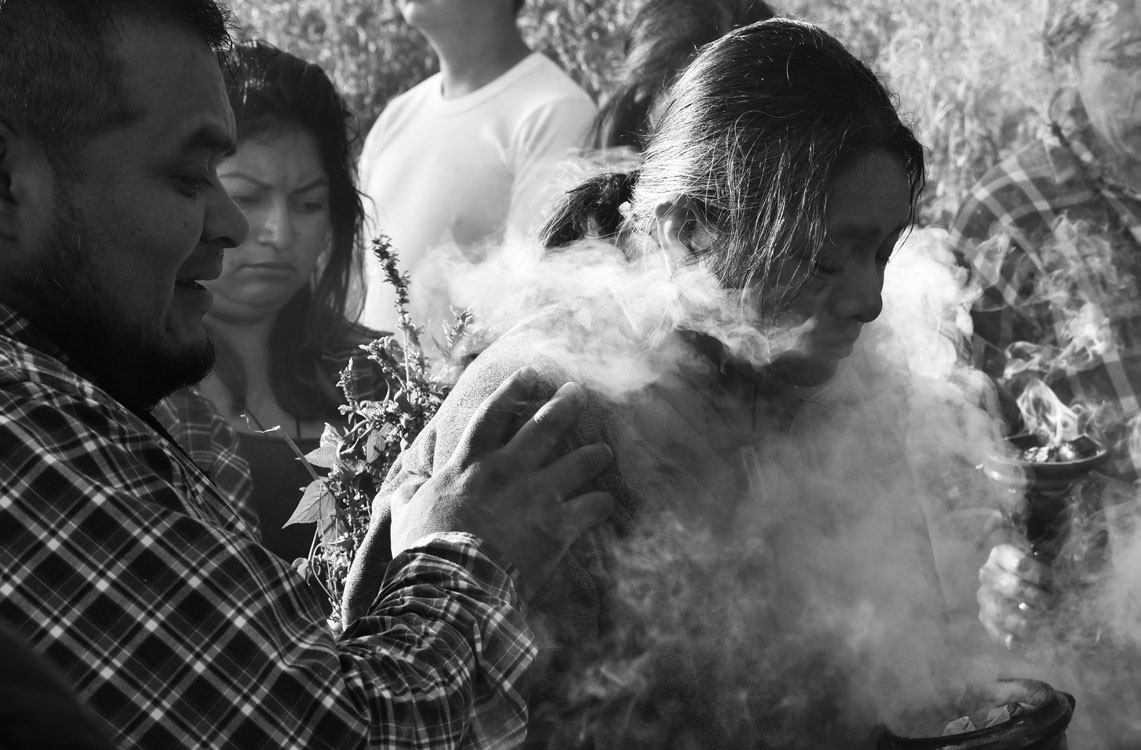
Graniceros of Amecameca, Mexico
Graniceros live primarily in the Mexican states of Puebla and Mexico, in cities and pueblos surrounding Popocatépetl, an active volcano. While they’re sometimes asked to cure people of illnesses, acting as curanderos (traditional healers), their primary role is to conduct ceremonies where they strive to control the weather. These ceremonies have remained virtually unchanged for hundreds, perhaps thousands, of years and are held on a sacred hill and on the slopes of Iztaccihuatl, an extinct volcano.
The ceremonies follow the agricultural cycle. The first is on February 2nd, the start of the cycle when corn is traditionally planted. It is called “The Blessing of the Seeds.” Ceremonies called the Petition for Rain are held all throughout the month of May. In July, at the height of the Dog Days, a time of intense heat, graniceros hold a ceremony called the Canicula, where they ask their gods to lessen the heat and rain so that crops aren’t destroyed. In August, graniceros celebrate The Fiesta of Corn, marking the first harvested corn of the year. The final ceremony, the ceremony of gratitude, is in November and is where they give thanks for the harvest.
Graniceros regard all life as sacred: not only humans but plants, animals, even mountains, rivers and the earth. They call the earth madre (mother) and believe it’s alive. They revere Popocatépetl and Iztaccihuatl as gods. Graniceros have a profound respect for, and deep connection with, nature. Whether or not others believe that the volcanoes are gods or the earth is alive, one thing I’ve come to understand from attending their ceremonies is that it’s much more difficult to damage something you believe is sacred. Graniceros are well aware of the damage being done by climate change and believe they’re doing what they can to mitigate the effects.
I was invited to photograph the ceremonies and interview graniceros.
